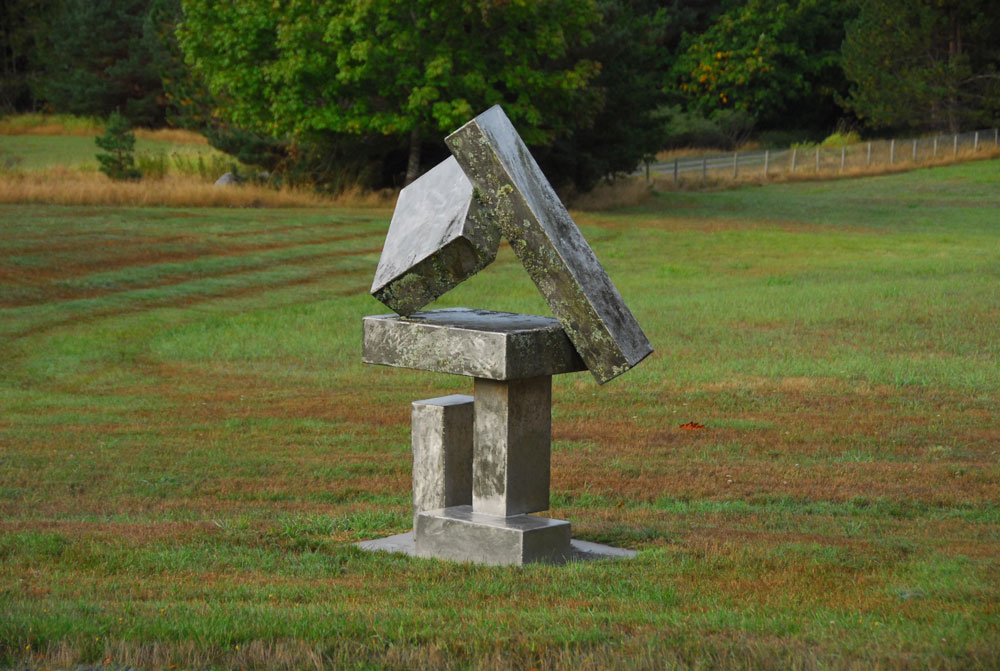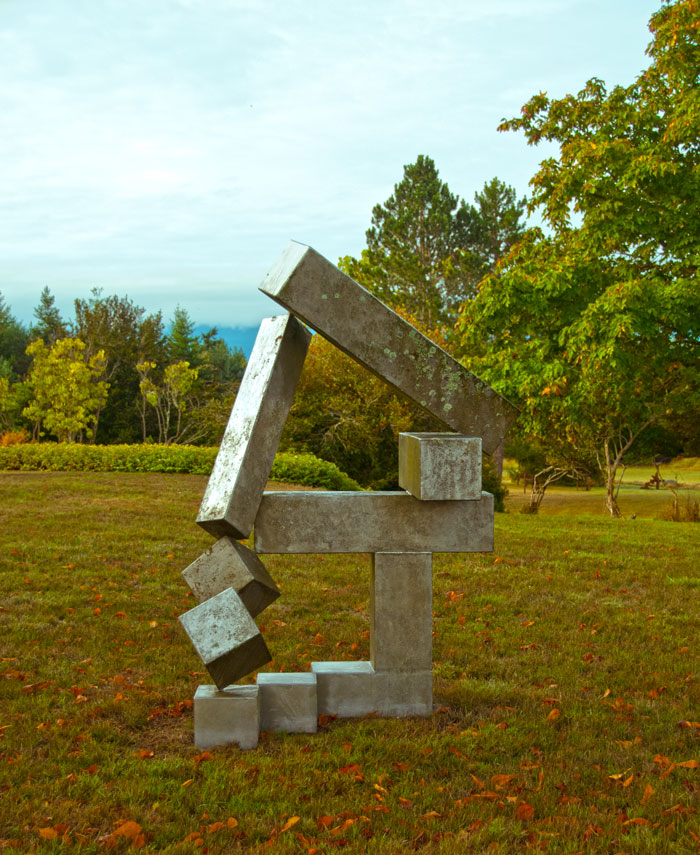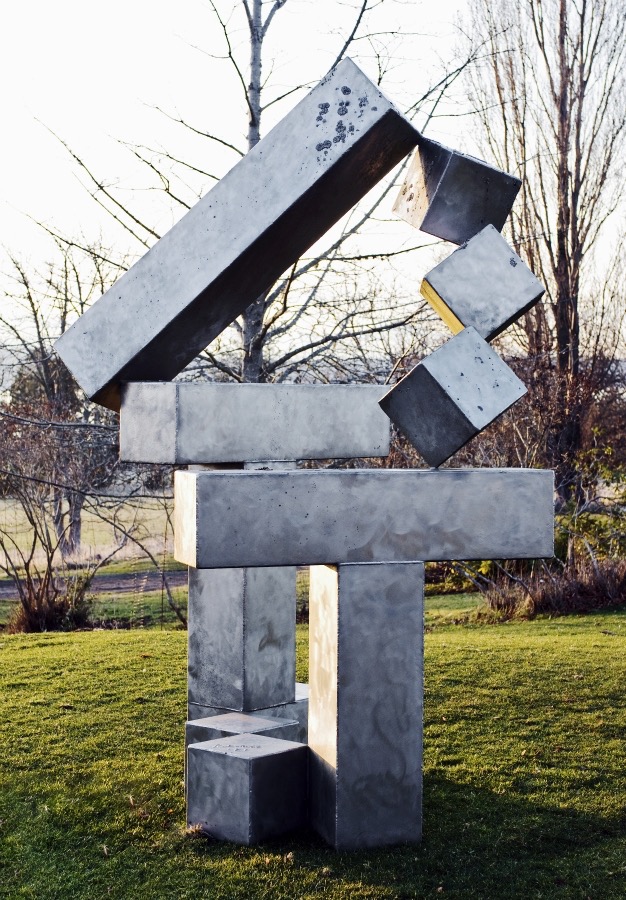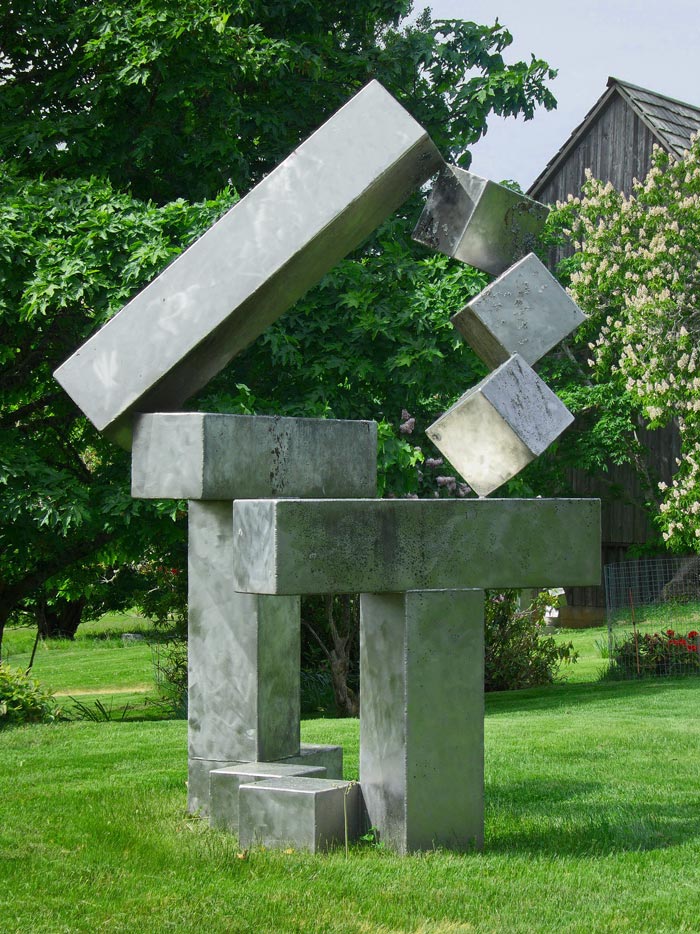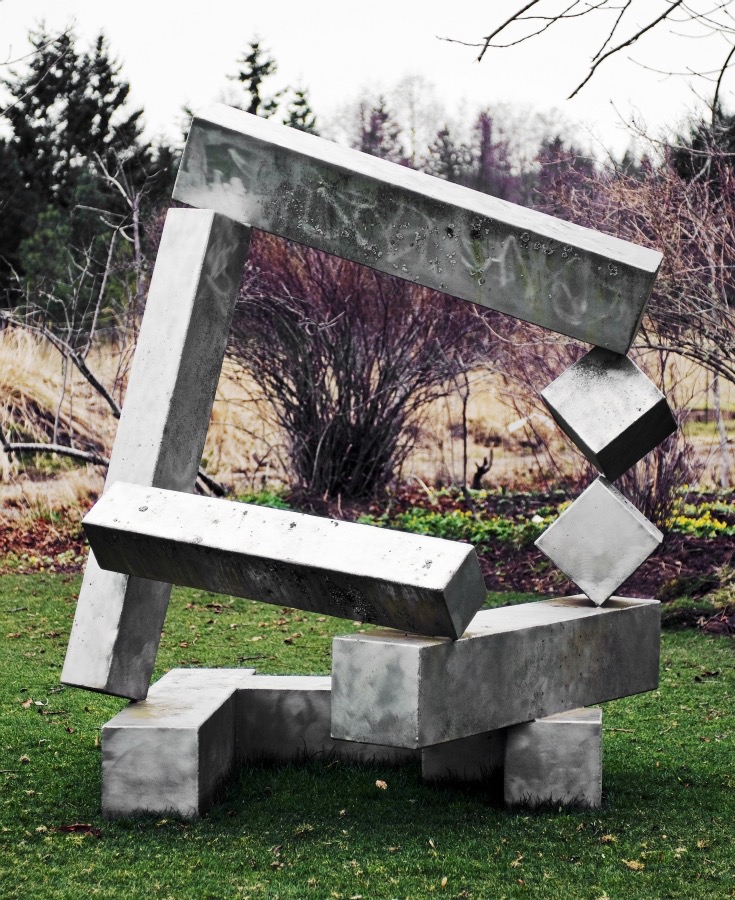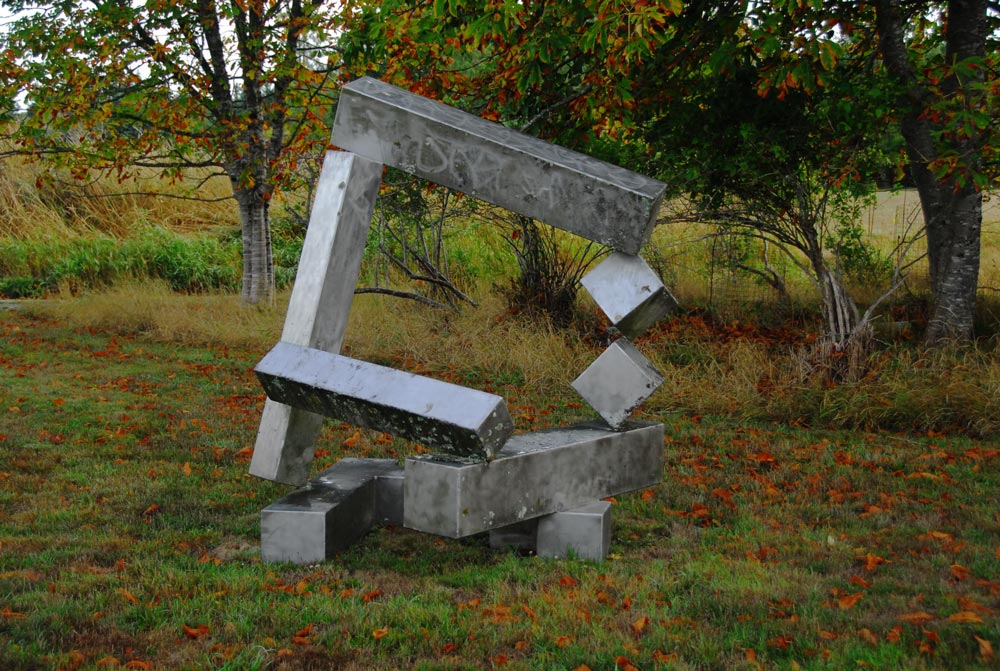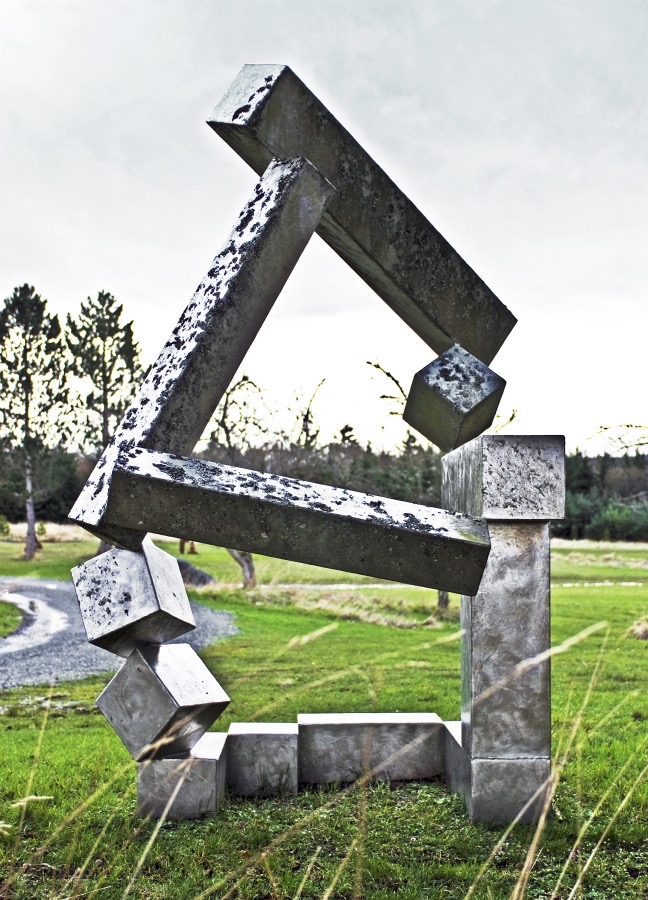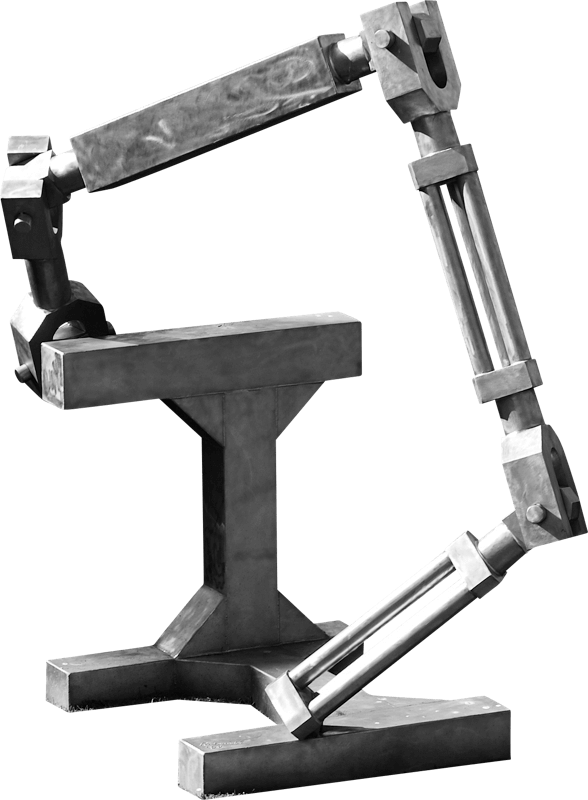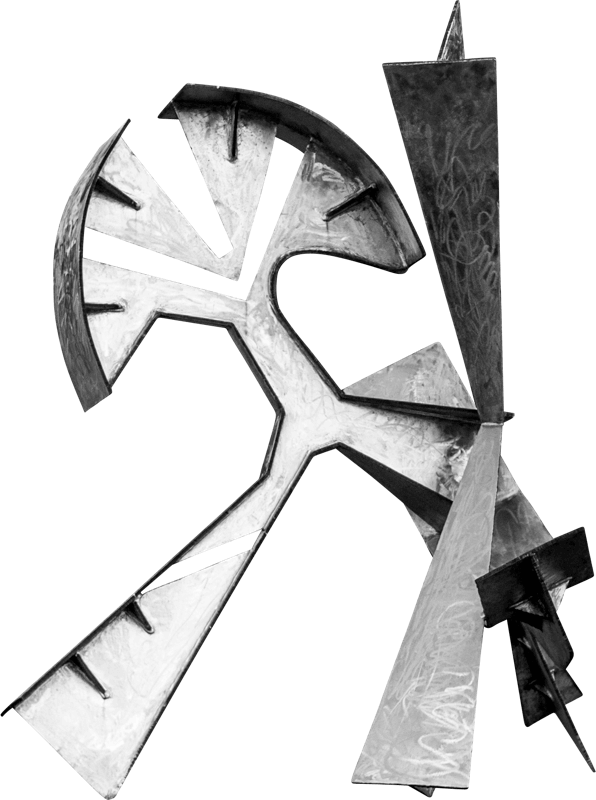Series 1
Series 1 marks a fundamental shift in Jeffrey Rubinoff’s working methods. These sculptures were the first to be made on Hornby Island; the first to be made sequentially; and the first to be conceived together as a series. Searching for a new and mature style, Rubinoff looked back to another sculptor in steel: the American Abstract Expressionist David Smith. The eight sculptures that make up Series 1 are all the product of a dialogue with Smith’s Cubi series, which he made between 1960 and his death in 1965. Rubinoff’s pieces employ a similar vocabulary of stainless steel cuboids, but he increasingly uses them to explore formal issues that were unique to him.
Series 1-1
This was the first work that Rubinoff completed in his studio on Hornby Island. It followed a long hiatus and represents a complete break from the aims of his previous work. While in his early works he sought originality through novelty of form, this Series adopted a different approach to originality. It deliberately refers back to the aesthetic properties of David Smith’s Cubi series, made in the 1960s, which Rubinoff admired greatly. This work represents an attempt to refine and evolve Smith’s work into a form of spatial-plastic music that functions in the full 360-degrees, something which Rubinoff felt that Smith’s work didn’t always achieve.
Series 1-2
Series 1-2
“That [avant garde] idea of originality, that it resided within the artist and not within art history. That is a bad mistake, a really really bad mistake.” – Jeffrey Rubinoff
Series 1-2 develops his response to David Smith further. In this piece the four cuboid melodies, all of the same length, interact contrapuntally. Three of them are of the same thickness, while the fourth is 50 percent thicker. This melody flows down into a shorter version of itself. Rubinoff here begins to arrange his melodic material in a “spiral” grid, a spatial framework that he retained in many of subsequent works.
Series 1-3
A vertically ascending cuboid line echoes that of the tree trunk next to which it is placed. This composition achieves a sense of lift in the components, all of which retain strictly quantized proportions to one another. In conjunction with the rising column, the spiral grid of this piece generates ever-changing negative spaces or ‘windows’ that complement the rectilinear positive forms. Rubinoff was exceptionally excited by this work, which he believed marked his crossing the threshold into art historically-grounded originality.
Series 1-4
Series 1-4
This piece explores the possibility of composing independent yet interacting melodic groups. The first group, of six cuboids, creates a solid but stately structure that rises, almost architecturally, off the ground. The second group, of four cuboids, disrupts that stability, with their melodies offset, rotated and at various angles to each other, and ultimately disintegrates into short cuboids which cascade down to the point at which the first group started. This gives a sense of two different rhythms, creating tension and resolution within a larger composition.
Series 1-5
This is one of only works in this series in which all elements are the same width and depth, which makes the composition more unified than those of its predecessors. The large internal negative space invites viewers to walk through the piece and observe both the internal and external negative spaces. Particularly noteworthy are the pair of T-shaped forms, at 90-degrees to each other and rotated around the vertical axis of the piece. They are thus in a double contrapuntal relationship to one another.
Series 1-6
Series 1-6
“When I finished this piece, I realized, here I am on Hornby Island, I am making this assumption about David Smith. I had seen several of his works at this point, but he hadn’t had a retrospective show. And the only person who knew all of David Smith’s work in the last years of his life was his international dealer Frank Lloyd of the Marlborough Gallery. By 1983 Marlborough was the biggest art dealer in the world and by then the only facility in New York that could show my work. [Frank and I] had this long conversation, and what he apparently wanted was a continuation of the large architectural work I did in the 1970s. But he never could offer me the freedom I had in doing that work… I wasn’t concerned with that. What he did for me was to confirm for me that I had evolved past David Smith.” – Jeffrey Rubinoff.
Series 1-7
This piece has an unusually active internal fluidity, which is not always apparent in photographs. It is one of the highlights of Series 1, in the way that it masterfully combines at least four melodic groupings: the major subject at 90 and 180 degrees angles to itself; a second countersubject which is rotated at non-rectilinear angles; and two nested minor melodic groups – the whole piece constructed around two Vs moving in opposite directions.
Series 1-8
Series 1-8
“Stainless steel comes as a grey nothing. Once you start welding it you start changing all of its colours and characteristics. And you begin to create flaws or not flaws. Each one of these pieces are probably finished up to 10 or 15 times, and then later 16 and 18 times… It really is a terrible pain in the ass. But this gives you this depth of finish that goes to infinity into the interior of the piece.” – Jeffrey Rubinoff.



